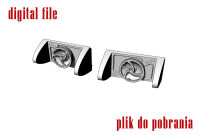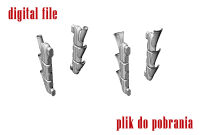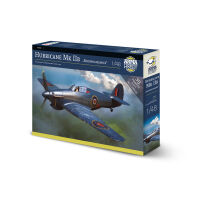H2K48032 Douglas A-4C Skyhawk 1/48
- Add feedback:
- H2K48032
- Manufacturer: Hobby2000
-
Availability:
Low stock
Delivery time: 1-3 days
- Type: Aeroplane kit
- Medium: plastic
- Scale: 1/48
- Remarks: Hasegawa + cartograf
Hasegawa model in Hobby2000 boxing with Cartograf decal and masks
Hasegawa kit 1/48 scale with Cartograf decals and masks
Markings and camouflage
Both markings options are in standart US Navy camouflage oth the Vietnam War Era, FS36440 FS17875
- VA-144 Road Runners BuNo 149532, 1966 - USS Kitty Hawk
- VA-76 Spirits BuNo 148609 (Lt. Cdr. Ted R. Swartz), 1967 - USS Bon Homme Richard (CVA-31), one aerial kill on Mig-17 with Zuni unguided rockets salvo on May, 1st 1967.
Falklands Malvinas
Pre-order the Double Mustang from Arma Hobby
17-05-2024
In celebration of the upcoming anniversary of D-Day, the Normandy landings, we have a special treat for you! This June, a luxurious version of the P-51 B Mustang™ model in 1/72 scale will be available to modelers. It's not just a model – it's a true gem for every collector.
What's in the box?
Two sets of plastic parts – perfect for creating a double dose of...
Long Weekend May '24
27-04-2024
In 1-3 May in Poland are Holidays. Our delivery team is on Long Weekend Leave since April 27th. Sorry for inconvenience, but we hope you understand. Delivery service is back on May 6th, 2024.
1st May - Labour Holiday
2nd May - National Flag Day
3rd May - Constitution Day
Hobby 2000 releases, April 2024
26-04-2024
More new Hobby 2000 products have already arrived in our store. The main force of the delivery are 1/35 scale vehicles of the Polish Army and their close air support - two 1/48 scale Skyhawks.
H2K35005 K9A1 'Thunder' Polish Army SPH
H2K35006 K2 'Black Panther' Polish Army MBT
H2K35006SE K2 'Black Panther' Polish Army - Special Edition
H2K35007 M1A1 FEP Abrams - Polish Army MBT
H2K48031...


















 Polish
Polish